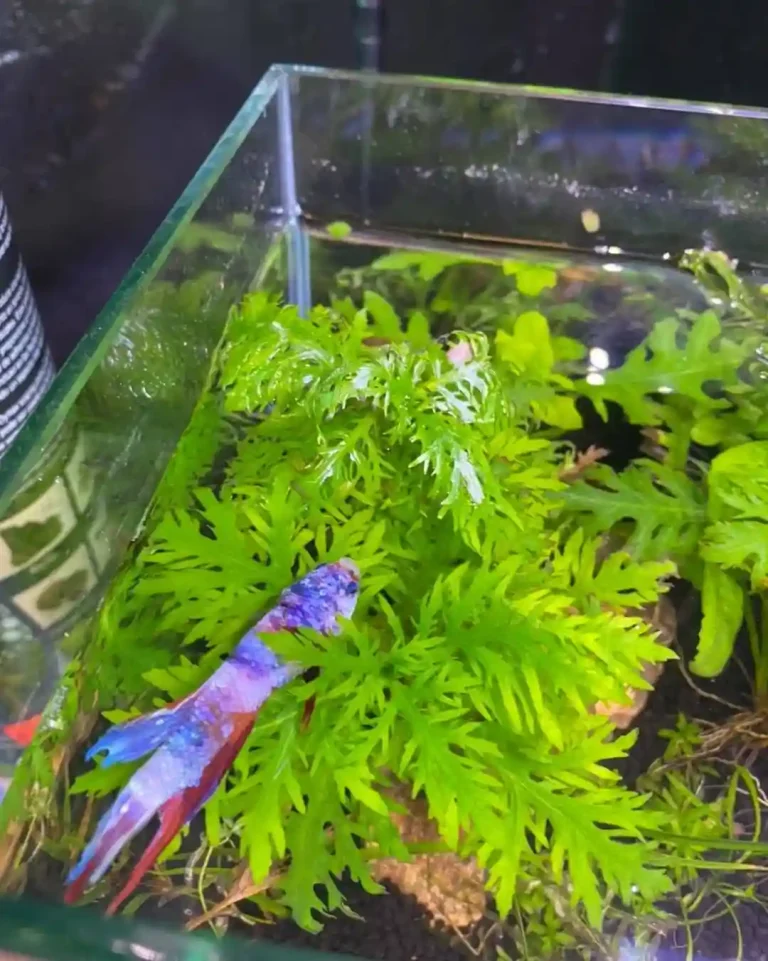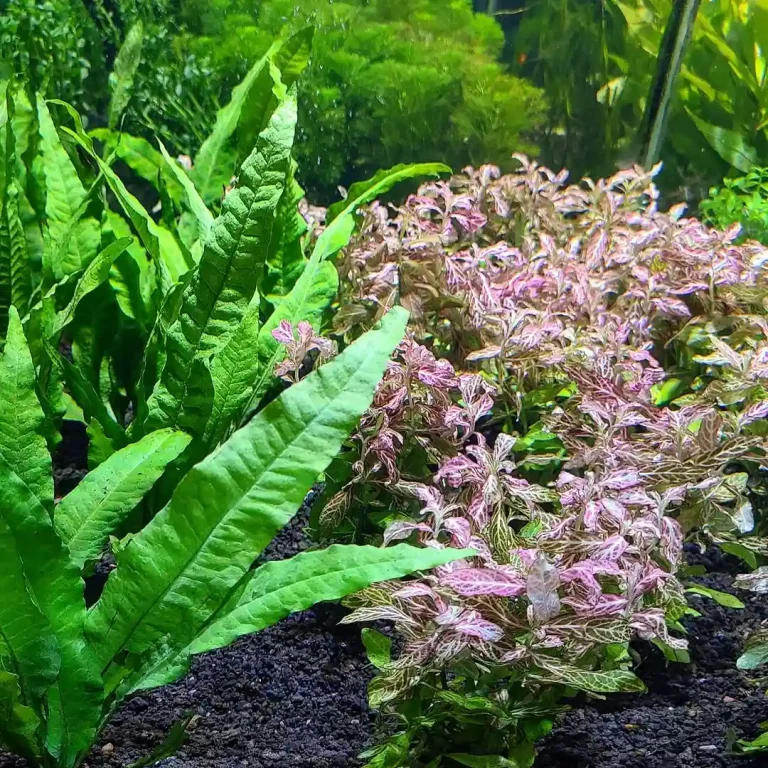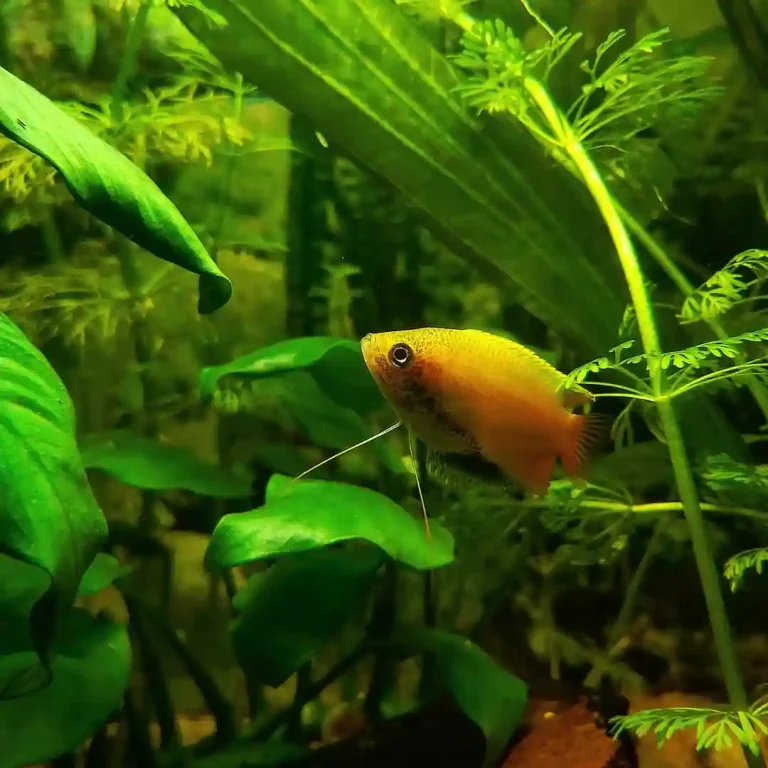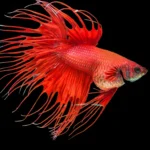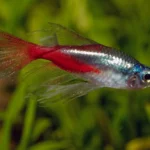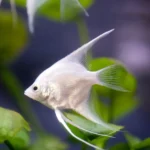Are you tired of waiting months to see visible growth in your aquarium plants? Whether you’re setting up a new tank or looking to refresh your current aquatic garden, fast-growing plants can make a dramatic difference in just weeks.
In this guide, we’ll explore the best quick-growing aquatic plants that not only look beautiful but also help maintain a healthier ecosystem by absorbing excess nutrients and naturally controlling algae.
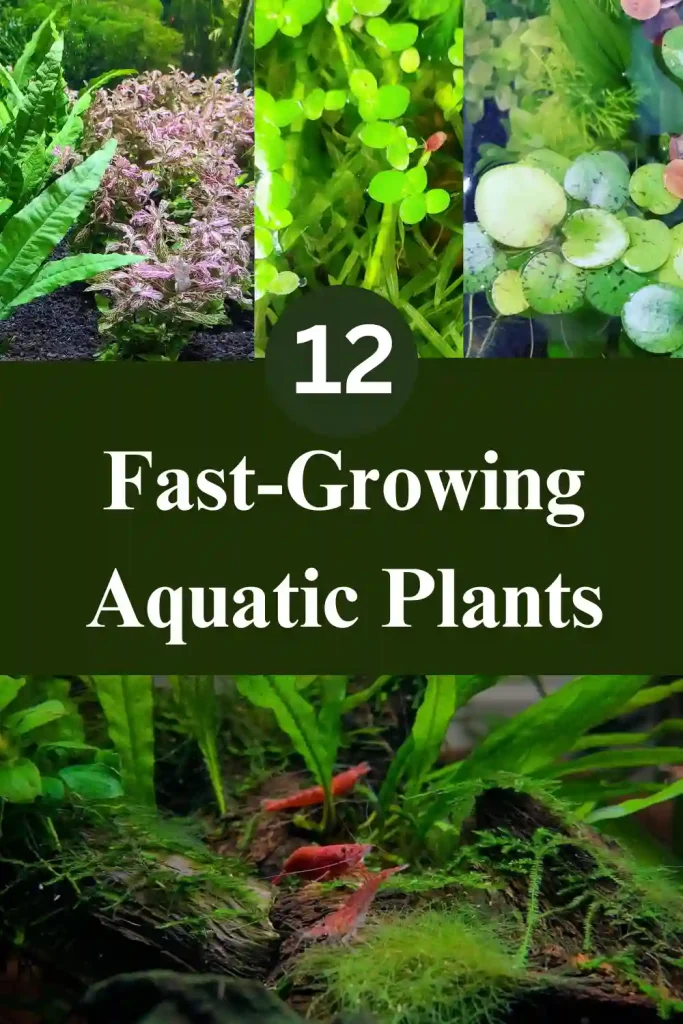
Why Choose Fast-Growing Aquatic Plants?
Before diving into our plant recommendations, let’s understand why fast-growing species are often the best choice for both beginners and experienced aquarists:
- Natural water filtration – They rapidly absorb nitrates, phosphates, and other nutrients that would otherwise feed algae
- Oxygen production – Faster growth means more photosynthesis and higher oxygen levels for your fish
- Fish habitat – Quick-growing plants provide hiding spots and breeding areas for tank inhabitants sooner
- Cost-effective – Many grow so quickly that one purchase can lead to multiple plants as you trim and replant
- Instant gratification – See visible changes in your aquascape within days or weeks instead of months
Top 12 Fast-Growing Aquatic Plants for Your Freshwater Tank
Let’s explore some of the fastest-growing plants you can add to your aquarium today:
1. Amazon Frogbit (Limnobium laevigatum)

Growth habit: Floating plant with round, glossy leaves
Light needs: Moderate to high
Difficulty: Easy
Amazon Frogbit forms beautiful floating rosettes with round leaves that create a carpet on your water’s surface. Its long, hanging roots not only add visual interest but provide excellent hiding places for fish fry and shrimp.
Care tips: To prevent it from blocking too much light from reaching plants below, regularly thin out excess growth. This plant grows extremely quickly in good conditions, sometimes doubling in coverage every 1-2 weeks.
2. Amazon Sword (Echinodorus grisebachii)

Growth habit: Rosette plant with broad, sword-shaped leaves
Light needs: Moderate
Difficulty: Easy to moderate
The Amazon Sword is a classic aquarium plant with broad, green leaves that can reach impressive sizes, making it perfect as a statement background plant. Once established, it sends out new leaves regularly.
Care tips: Plant in nutrient-rich substrate and provide root tabs for maximum growth. New plants might take a couple of weeks to adjust before showing rapid growth.
3. Dwarf Sagittaria (Sagittaria subulata)
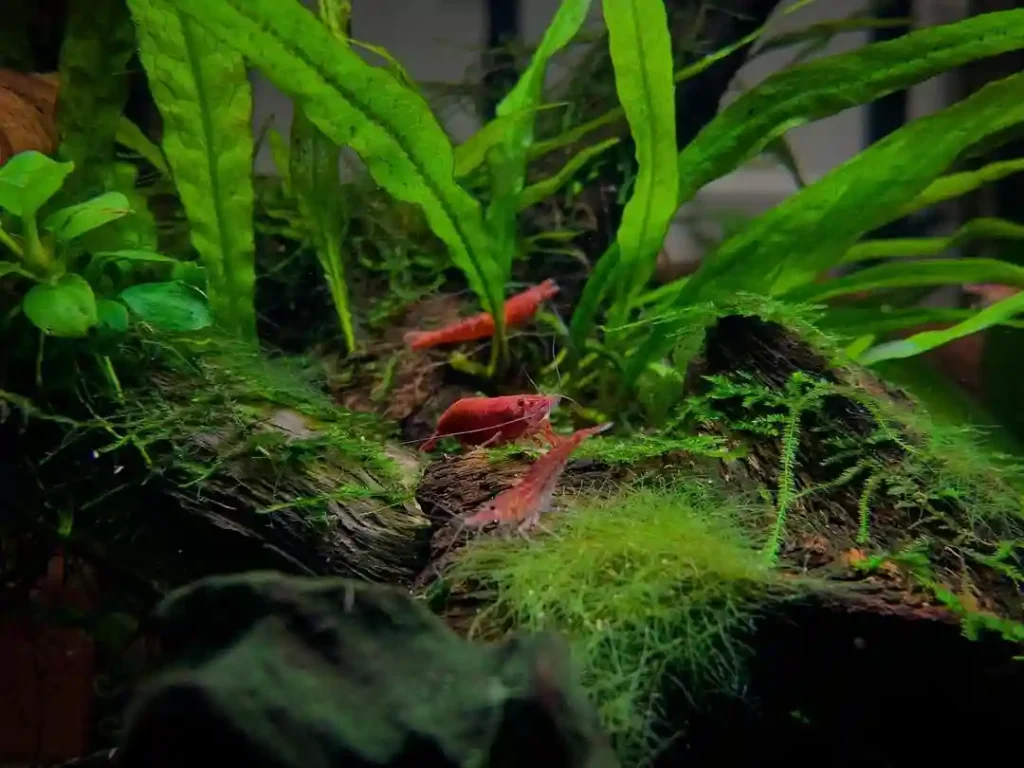
Growth habit: Grass-like foreground carpet plant
Light needs: Moderate
Difficulty: Easy
Often called “dwarf sag,” this plant spreads through runners to create a lush carpet effect. In lower light, it stays short (2-4 inches), while in brighter conditions, it may grow taller.
Care tips: Plant in small clumps about an inch apart, and watch as they fill in the gaps. This plant is very undemanding and will grow in most conditions.
4. Hornwort (Ceratophyllum demersum)
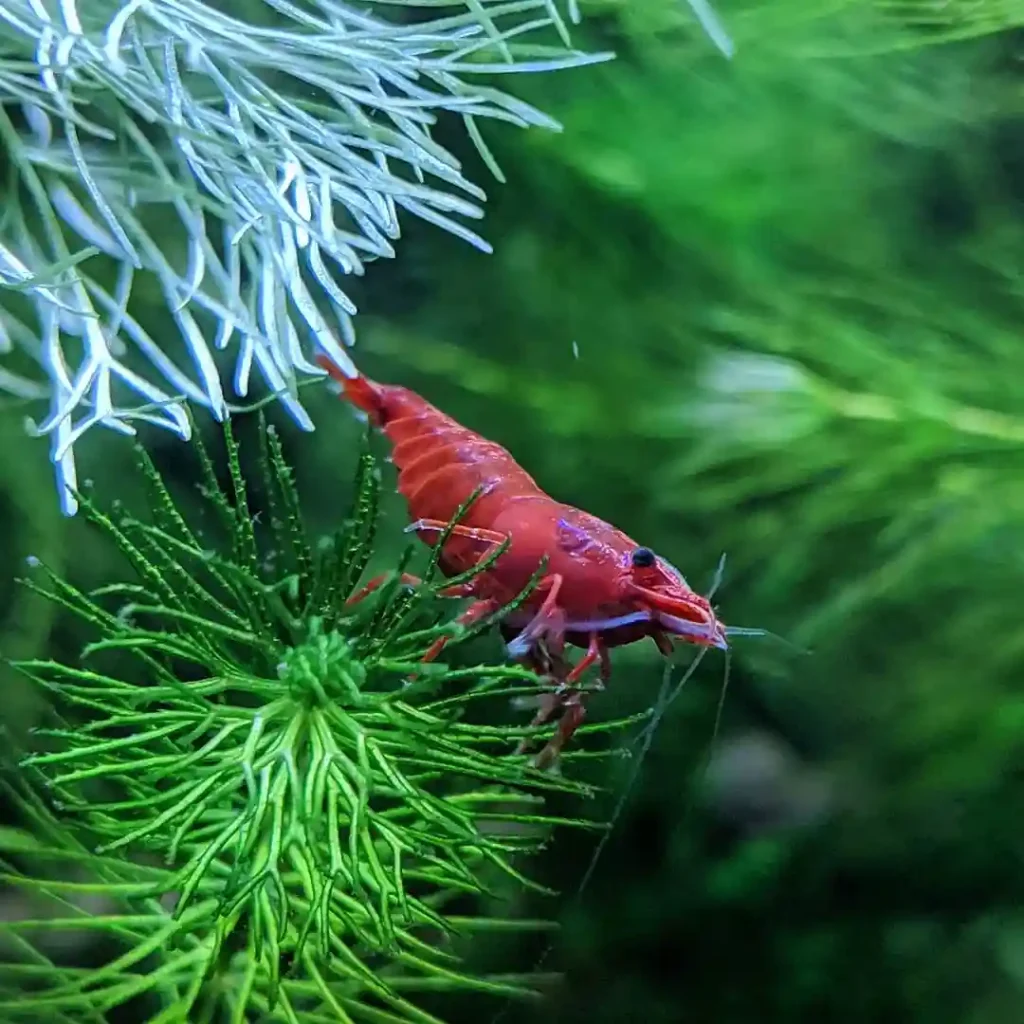
Growth habit: Stem plant that can be floated or planted
Light needs: Low to high
Difficulty: Very easy
Hornwort is arguably one of the fastest-growing aquarium plants available. Its feathery, dark green needles grow in whorls around the stem, creating a fluffy appearance that adds texture to any tank.
Care tips: Hornwort doesn’t develop true roots, so it can be weighted down with plant weights or simply left floating. In good conditions, it can grow several inches per week!
5. Java Moss (Taxiphyllum barbieri)
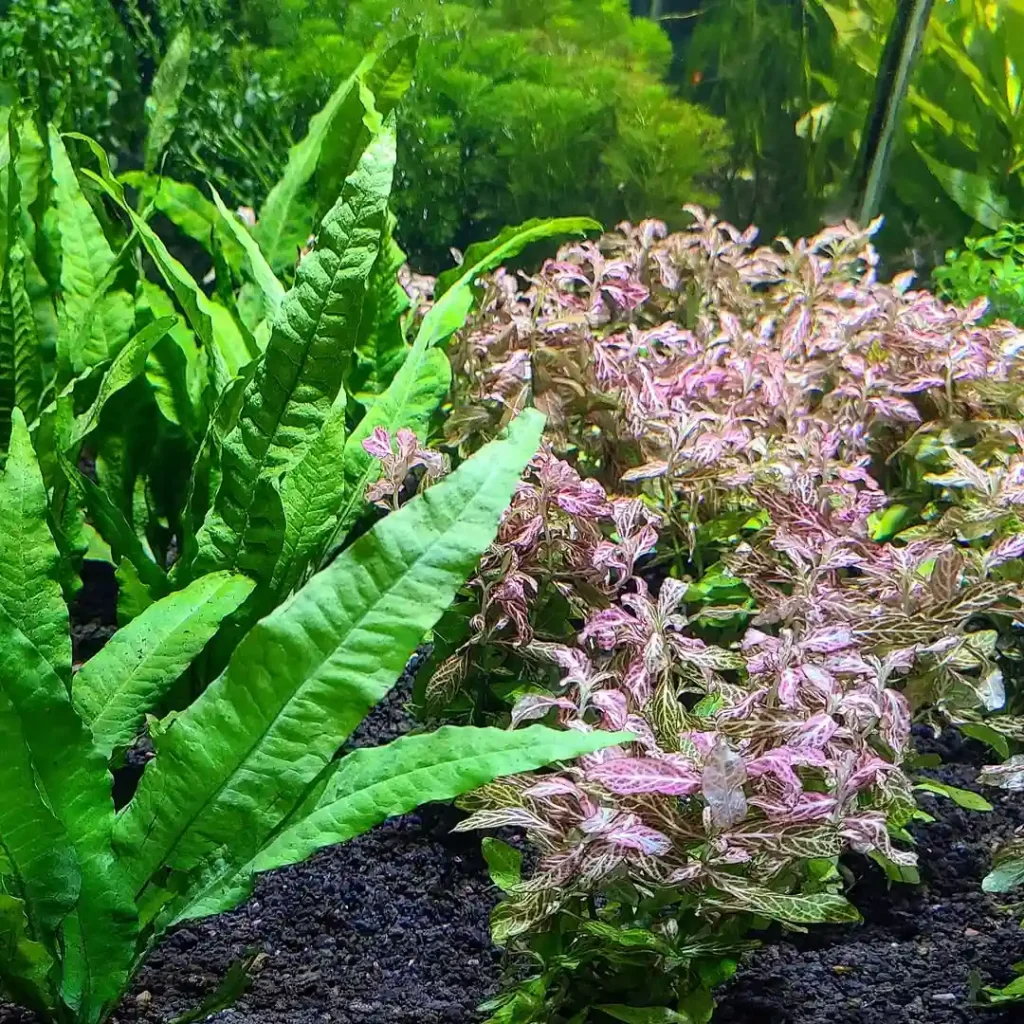
Growth habit: Creeping moss that attaches to surfaces
Light needs: Low to moderate
Difficulty: Very easy
Java Moss is incredibly versatile and can grow on almost any surface. It creates a beautiful natural look when attached to driftwood or rocks and provides excellent surface area for beneficial bacteria.
Care tips: Secure Java Moss to hardscape using fishing line or cotton thread. The thread will eventually decompose as the moss attaches itself. Under good conditions, it can double in size every 2-3 weeks.
6. Water Wisteria (Hygrophila difformis)

Growth habit: Stem plant with lace-like leaves
Light needs: Moderate to high
Difficulty: Easy
Water Wisteria features intricate, delicate-looking leaves that add a unique texture to your aquarium. It can be planted in the substrate or left floating, providing flexibility in your aquascaping.
Care tips: Trim the tops and replant them to propagate more plants. Water Wisteria can grow up to an inch per day in optimal conditions!
7. Dwarf Ambulia (Limnophila sessiliflora)
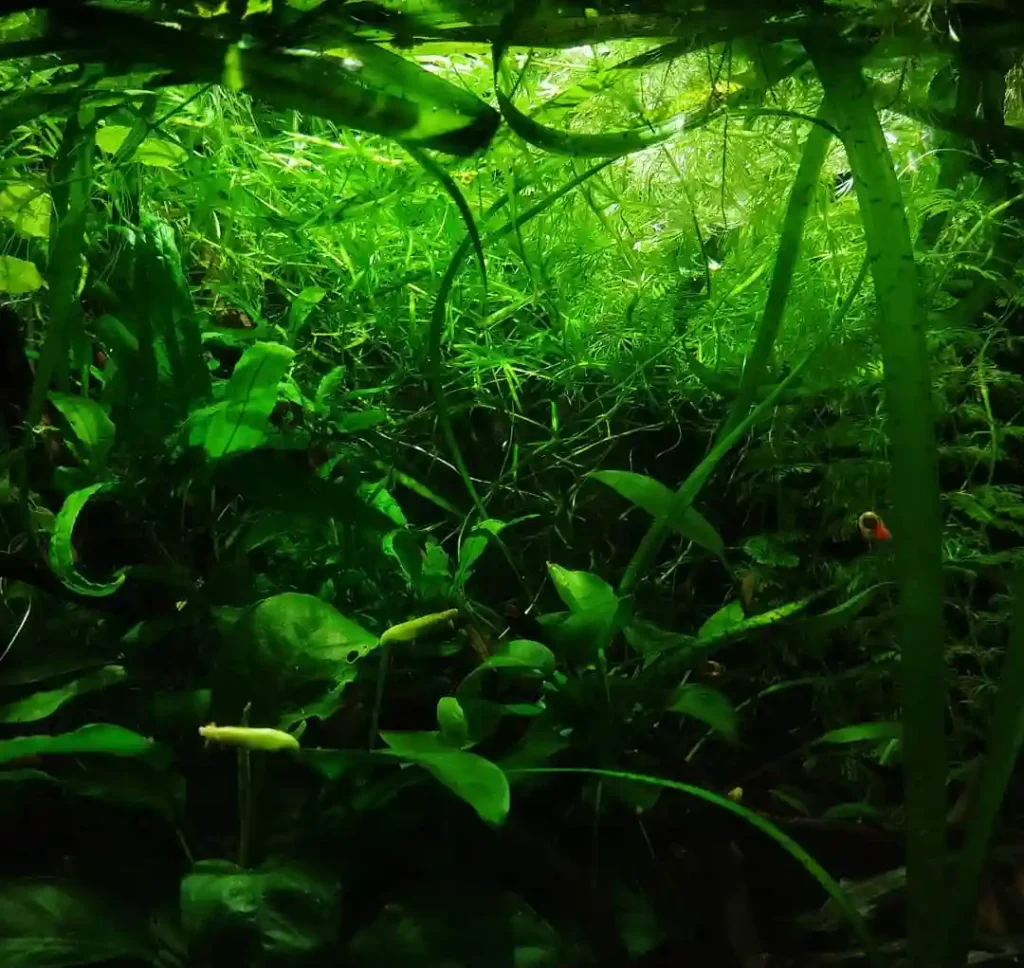
Growth habit: Feathery stem plant Light needs: Moderate to high Difficulty: Easy to moderate
Native to Southeast Asia, Dwarf Ambulia features fine, feathery leaves arranged around a central stem. Its delicate appearance belies its rapid growth rate.
Care tips: Plant in groups for the best visual effect. Regular trimming encourages bushier growth. Can grow 1-2 inches per week.
8. Giant Hygro (Hygrophila corymbosa)

Growth habit: Robust stem plant with broad leaves
Light needs: Moderate to high
Difficulty: Easy
With its thick stems and large, broad leaves, Giant Hygro makes an excellent background plant that adds structure to your aquascape. Its rapid growth makes it effective at absorbing excess nutrients.
Care tips: Benefits from CO₂ supplementation but will grow well without it. Regular pruning prevents it from outgrowing your tank. Can add a new set of leaves every few days.
9. Duckweed (Lemna minor)
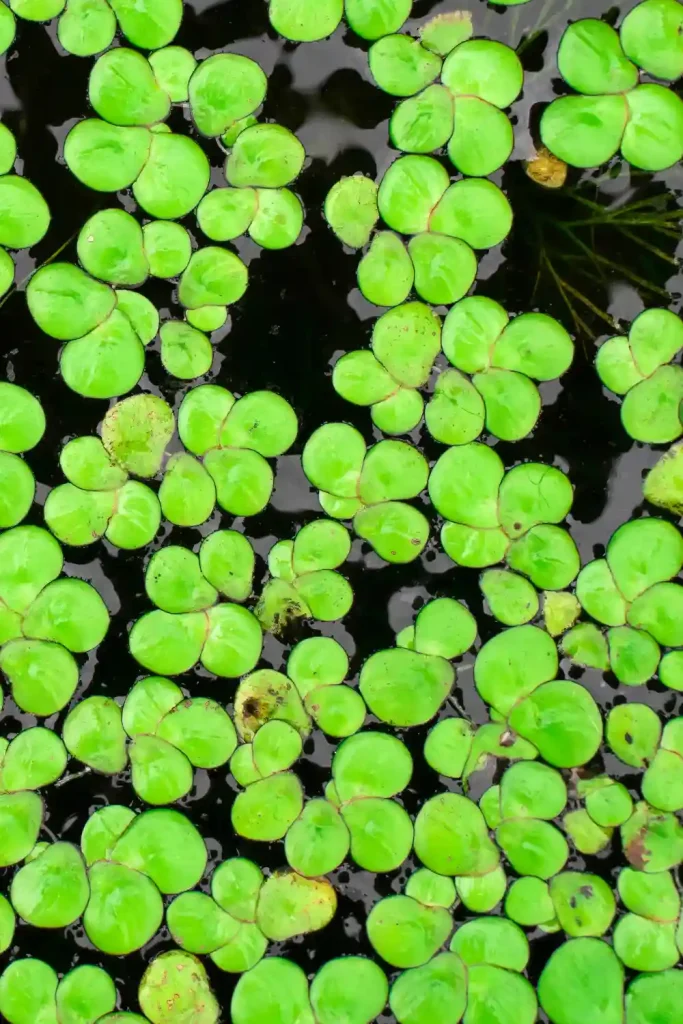
Growth habit: Tiny floating plant
Light needs: Low to high
Difficulty: Very easy
As one of the smallest flowering plants in the world, Duckweed consists of tiny green discs that float on the water surface. It reproduces at an astonishing rate.
Care tips: Be cautious when introducing Duckweed it can quickly cover the entire water surface. Many aquarists use it temporarily to help control nutrient levels, then manage or remove it once the tank stabilizes. It can double in coverage every 24-48 hours!
10. Anacharis/Elodea (Egeria densa)
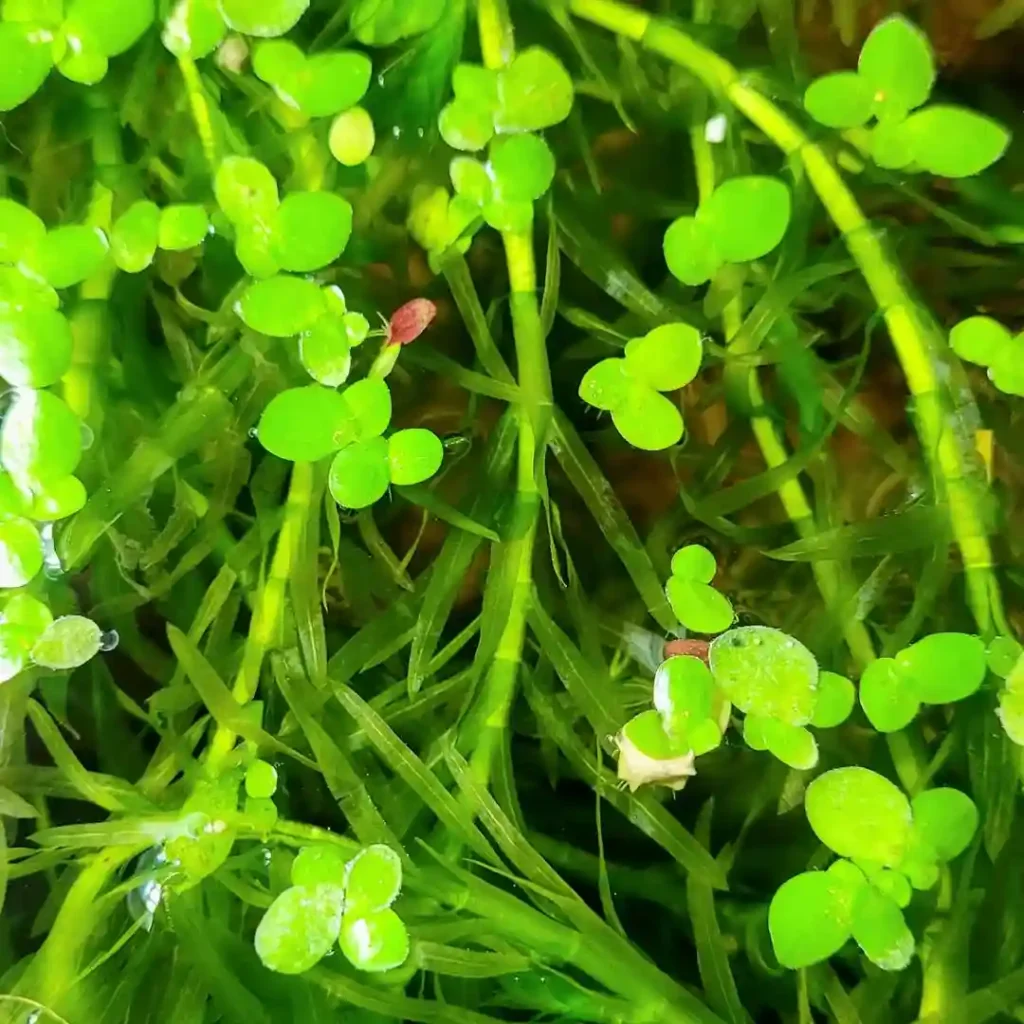
Growth habit: Stem plant with whorls of leaves
Light needs: Low to high
Difficulty: Very easy
Anacharis features bright green, leafy stems that can be planted in bunches or left floating. It’s often used in goldfish tanks as it’s one of the few plants that can outgrow their appetites.
Care tips: Plant stems deeply or weight them if floating. Can grow 2+ inches per week in good conditions.
11. Aponogeton Crispus
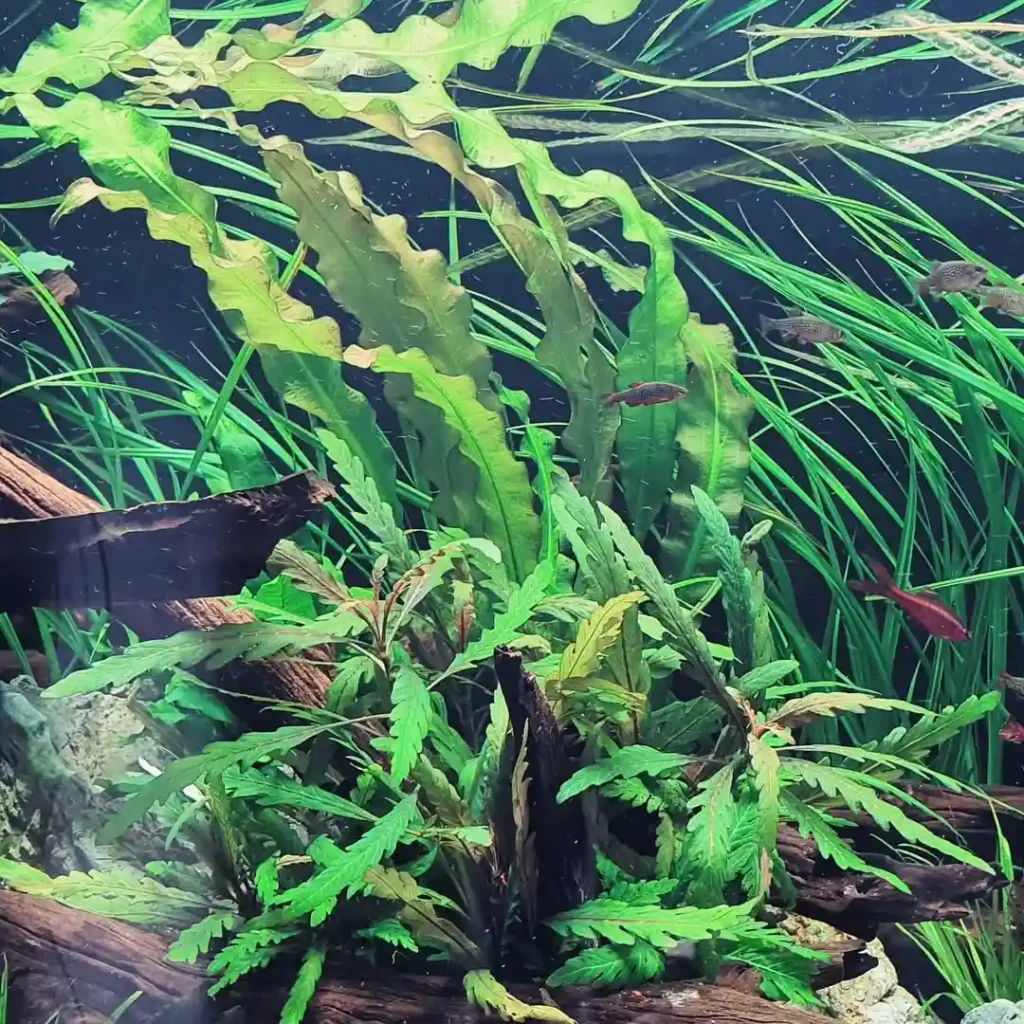
Growth habit: Bulb plant with wavy leaves
Light needs: Low to moderate
Difficulty: Easy
This bulb plant produces long, wavy leaves that add movement and texture to your aquarium. Once the bulb sprouts, growth is surprisingly fast.
Care tips: Plant the bulb halfway into the substrate. After initial growth, it may go dormant periodically—this is normal. When actively growing, new leaves can emerge weekly.
12. Water Sprite (Ceratopteris thalictroides)
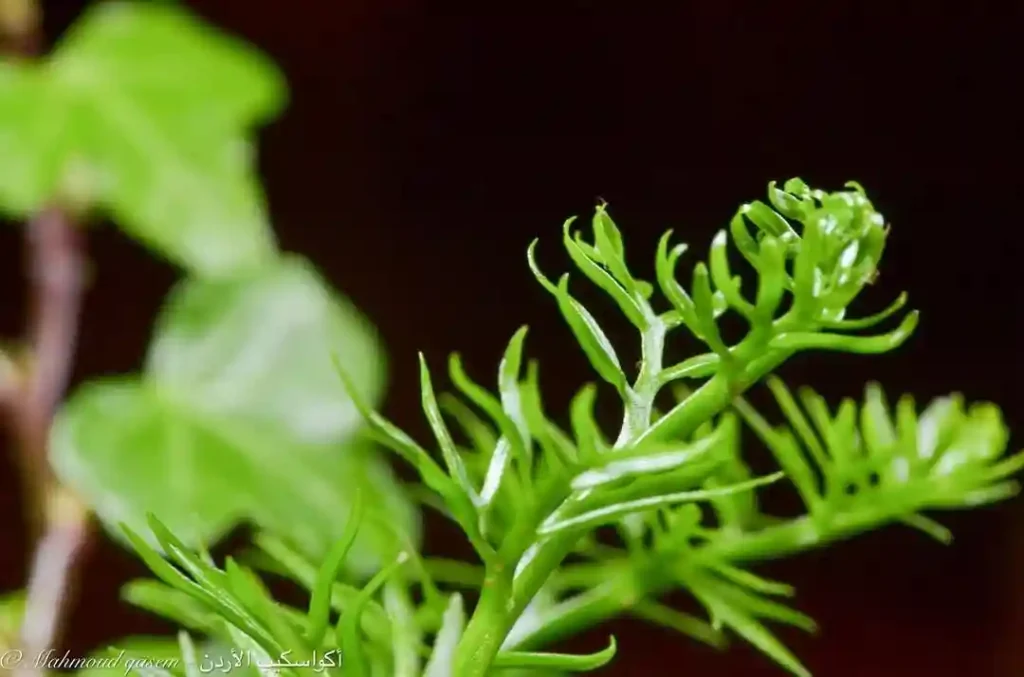
Growth habit: Fern-like plant that can be planted or floated
Light needs: Moderate
Difficulty: Easy
Water Sprite has delicate, fern-like foliage that adds a gentle, flowing appearance to aquascapes. It’s extremely versatile and can be grown both planted in substrate or floating.
Care tips: When floating, it develops small plantlets along the leaves that can be separated to form new plants. Growth can exceed an inch per week.
Comparing Fast-Growing Aquatic Plants
| Plant Name | Growth Rate | Light Requirement | Planting Style | Maintenance Level |
| Amazon Frogbit | Very Fast | Moderate-High | Floating | Medium |
| Amazon Sword | Medium-Fast | Moderate | Rooted | Low |
| Dwarf Sagittaria | Fast | Moderate | Carpet | Low |
| Hornwort | Very Fast | Low-High | Floating/Planted | Low |
| Java Moss | Medium-Fast | Low-Moderate | Attached | Very Low |
| Water Wisteria | Very Fast | Moderate-High | Stem | Medium |
| Dwarf Ambulia | Fast | Moderate-High | Stem | Medium |
| Giant Hygro | Fast | Moderate-High | Stem | Medium |
| Duckweed | Extremely Fast | Low-High | Floating | High (control) |
| Anacharis | Very Fast | Low-High | Stem | Low |
| Aponogeton Crispus | Fast | Low-Moderate | Bulb | Low |
| Water Sprite | Fast | Moderate | Floating/Planted | Low |
Key Considerations for Fast-Growing Plants
While fast-growing plants offer many benefits, they do require some special consideration:
Lighting Requirements
Most fast-growing plants need adequate lighting to fuel their rapid growth. Consider investing in a good quality LED light designed for planted tanks. Generally, you’ll want:
- Low light plants (Java Moss, Hornwort): 10-20 PAR
- Medium light plants (Amazon Sword, Water Sprite): 20-50 PAR
- High light plants (Water Wisteria, Dwarf Ambulia): 50+ PAR
If you’re not ready to invest in high-powered lighting, stick with the low to medium light options in our list.
Nutrient Requirements
Fast growth means faster nutrient uptake. To keep your plants healthy:
- Consider adding liquid fertilizers weekly
- Use root tabs for heavy root feeders like Amazon Sword
- If leaves start to yellow, it often indicates nutrient deficiency
CO₂ Supplementation
While not strictly necessary for most plants on this list, adding CO₂ can supercharge growth rates. Options include:
- DIY yeast-based systems (budget-friendly but inconsistent)
- Liquid carbon supplements (moderate effect but easier to use)
- Pressurized CO₂ systems (most effective but more expensive)
Even without added CO₂, all the plants we’ve listed will still grow relatively quickly.
Regular Maintenance
The trade-off for rapid growth is more frequent maintenance:
- Pruning: Plan on weekly or bi-weekly trimming sessions
- Thinning: Especially for floating plants that can block light
- Replanting: Many fast-growers can be propagated by replanting cuttings
This maintenance isn’t just busy work—it helps your plants stay healthy and keeps your tank looking its best.
Benefits of Fast-Growing Plants for Tank Ecosystem
Beyond their aesthetic appeal, fast-growing plants significantly improve your aquarium’s overall health:
Natural Algae Control
Fast-growing plants compete directly with algae for nutrients. By consuming excess nitrates, phosphates, and other nutrients that would otherwise feed algae, they help keep your tank cleaner naturally.
Improved Water Quality
Through their rapid nutrient uptake, these plants help maintain better water quality between water changes. This can mean more stable parameters and healthier fish.
Fish Behavior and Breeding
Many fish species show more natural behaviors, brighter colors, and increased breeding activity in heavily planted tanks. The sense of security provided by dense plant growth reduces stress on your aquatic pets.
Getting Started: Tips for Success
Ready to add some fast-growing plants to your tank? Here are some quick tips to ensure success:
- Start with just 2-3 species rather than trying too many at once
- Choose plants with similar care requirements to simplify maintenance
- Quarantine new plants before adding them to your main tank to prevent introducing pests
- Prepare for growth by planning your aquascape with future size in mind
- Have pruning tools ready – sharp scissors and tweezers are essential for planted tank maintenance
Final Thoughts
Fast-growing aquatic plants are the perfect solution for aquarists who want to see quick results, battle algae naturally, or provide a healthier environment for their fish. While they do require regular maintenance, the benefits far outweigh the extra effort.
Whether you choose floating plants like Amazon Frogbit, stem plants like Water Wisteria, or carpeting plants like Dwarf Sagittaria, incorporating these rapid growers will transform your aquarium into a lush underwater garden in record time.
Remember that even within the “fast-growing” category, some plants will grow more quickly than others depending on your specific tank conditions. Don’t be afraid to experiment with different species until you find the perfect combination for your aquarium.
Which fast-growing aquatic plants have you tried in your tank? Do you have any tips or favorite species to share? Let us know in the comments below!

